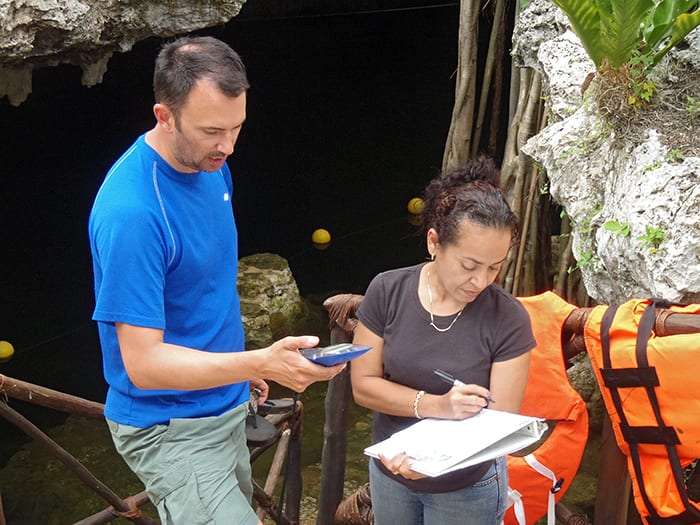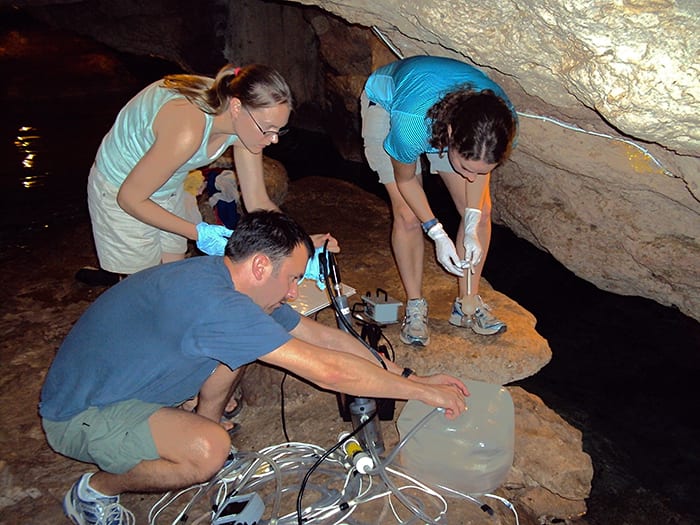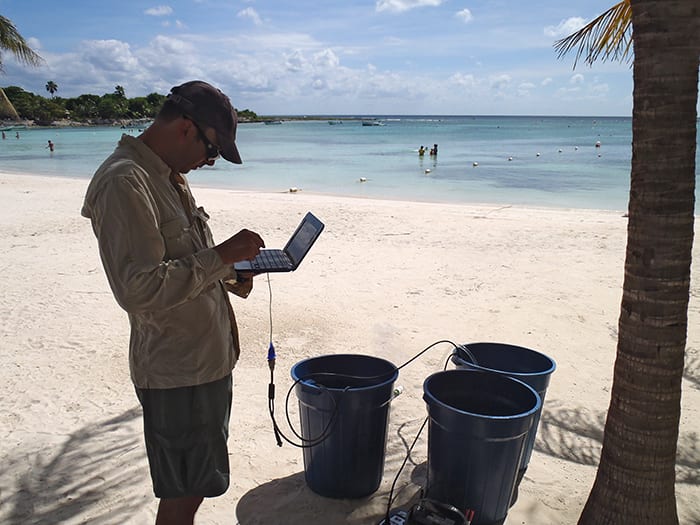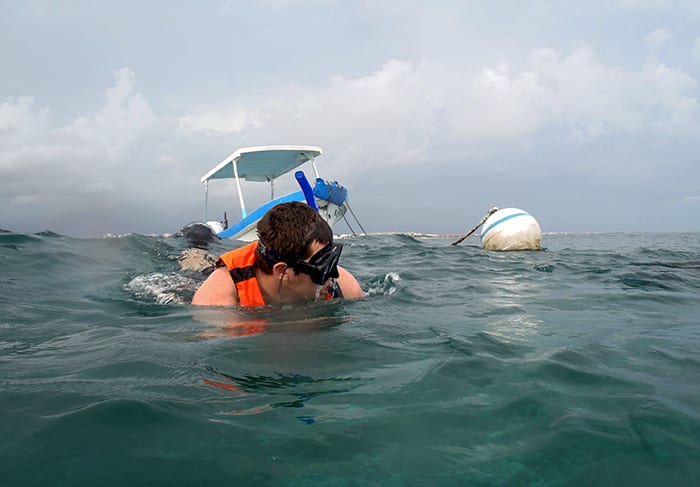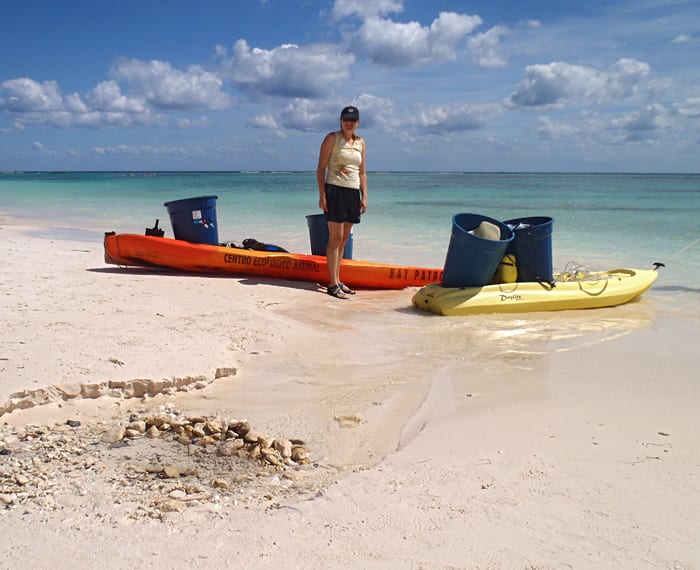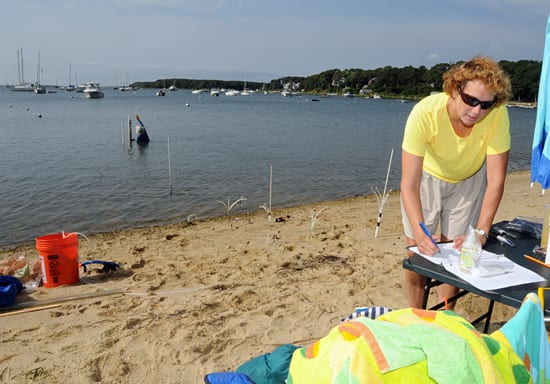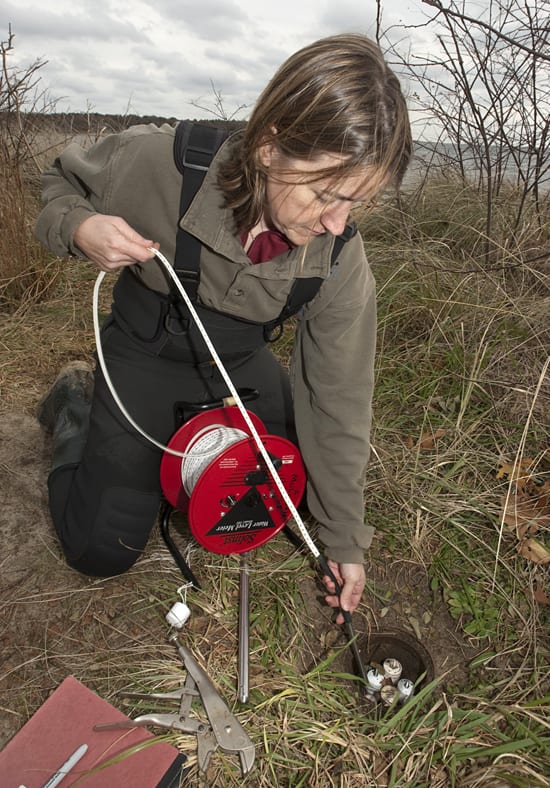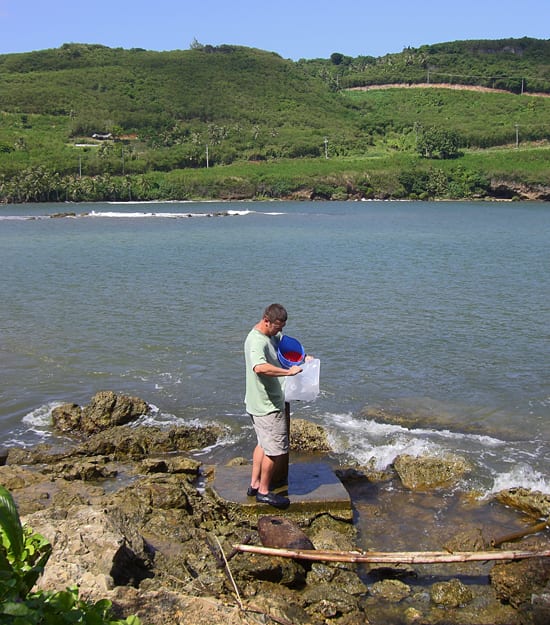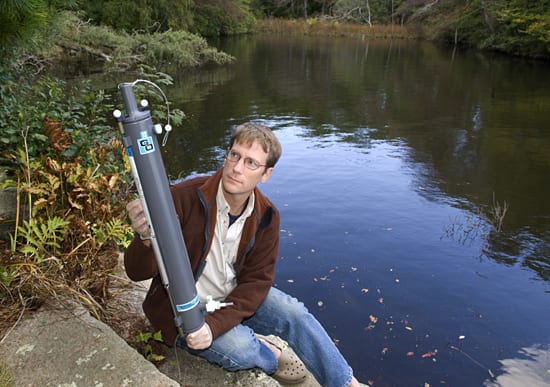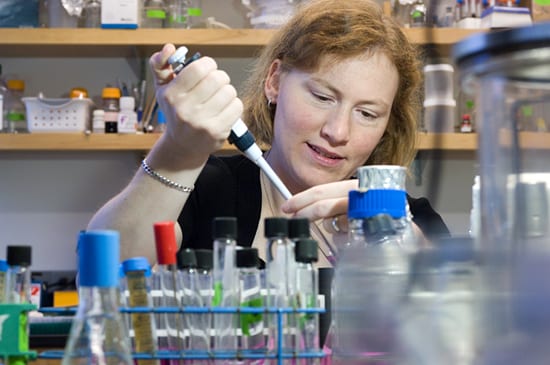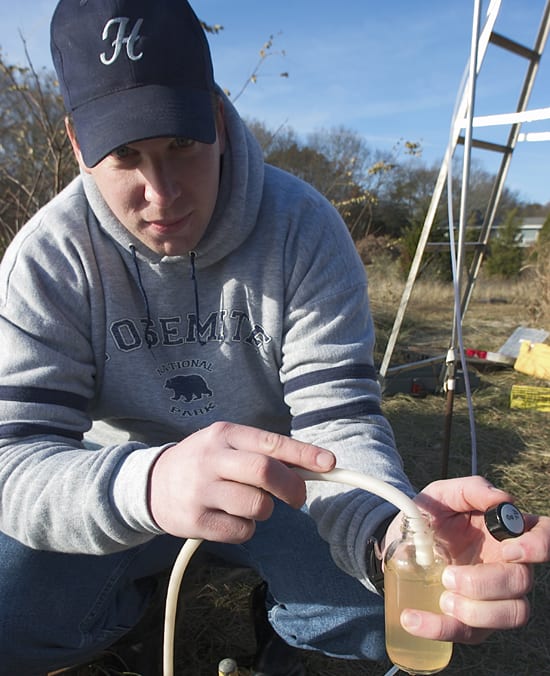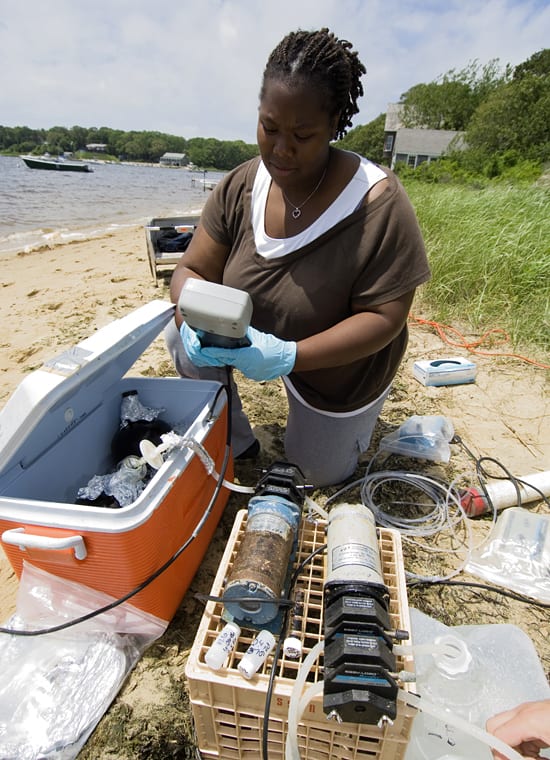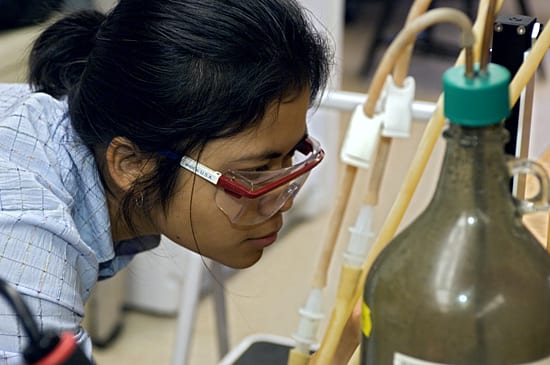Multimedia Items
X Marks the Spot
WHOI scientist Matt Charette and Carolina Ruiz Fernandez of the National Autonomous University of Mexico use a GPS device to determine the precise location of a cenote, or natural sinkhole,…
Read MoreSubterranean Sampling
Matt Charette, Meagan Gonneea, and Crystal Breier collect and test samples of groundwater in a cave on the Yucatan Peninsula, Mexico. The instrument behind Charette’s arm measures the salinity, pH,…
Read MoreTracking the Flow
WHOI scientist Matt Charette and his students travel around the world studying groundwater flow to the ocean from various types of aquifers. Here, he checks the salinity of groundwater samples…
Read MoreCoral Reconnaissance
Paul Henderson, a researcher in WHOI’s Coastal Groundwater Geochemistry Lab, snorkels near the Yucatan Peninsula to look for large corals for a study of groundwater flow. Because the Yucatan is…
Read MoreWater Flowing Underground
Water flowing through aquifers back to the ocean is part of Earth’s water cycle that people often overlook, said WHOI scientist Matt Charette of the Coastal Groundwater Geochemistry Lab, because…
Read MoreHidden Rivers
Graduate student Meagan Gonneea stands on a beach in Akumal Bay on Mexico’s Yucatán Peninsula, between kayaks loaded with pumps and barrels to collect water. The flow of water ending…
Read MoreDouble Check
At Cape Cod’s Waquoit Bay National Estuarine Research Reserve, 2010 Summer Student Fellow Cristin Luttazi records data as WHOI associate scientist Ann Mulligan (in the water) measures water level, temperature,…
Read MoreSubterranean mixing bowl
Ann Mulligan checks groundwater levels and salinity as part of monitoring studies of the saltwater-freshwater interface through time. Between 5 and 10 percent of the fresh water in the ocean…
Read MoreFrom a river to the ocean
Research Associate Paul Henderson collects a water sample from the Talofofo River, Guam. Samples like this help researchers better understand the effects, both locally and globally, of coastal contaminants in…
Read MoreOut from the sediments, into the water
WHOI Chemist Carl Lamborg holds a Niskin bottle, which is used to collect water samples. During work conducted in Waquoit Bay in 2005, Lamborg, fellow chemist Matt Charette, and other…
Read MoreGetting a Nitrogen Fix
Biogeochemist Karen Casciotti is working to understand how microorganisms affect the exchange of excess nutrients (principally nitrate) between groundwater and the coastal ocean. Casciotti and colleagues are using microbiological, molecular,…
Read MoreRemove the Water, Carry the Water
MIT/WHOI Joint Program student Dan Rogers collects groundwater from a coastal aquifer at Waquoit Bay National Estuarine Research Reserve. Dan’s research examines the role of microbes in consuming and transforming…
Read MoreRemove the Water, Carry the Water
WHOI Associate Scientist Matt Charette (left) and Research Assistant Matt Allen use pumps and instruments deployed on a canoe to collect water samples from Pamet Harbor in Truro, Mass. By…
Read MoreStudent Science
Summer Student Fellow DeAnna McCadney prepares equipment to gather samples for groundwater studies at the Waquoit Bay National Estuarine Research Reserve in East Falmouth, Mass. Researchers study how underwater aquifer…
Read MoreClose Watch
Summer Student Fellow Ratsirin (Prae) Supcharoen checks on anexperiment in chemist Matt Charette’s laboratory. Charettestudies submarine groundwater discharge into the coastal environment. The flow of groundwater into the ocean iscritical because…
Read More
